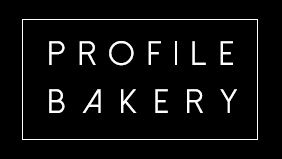Get your LinkedIn profile created or optimize
✔ HR experts
✔ Customized profile check
✔ Reach your goals on LinkedIn
Our expert – for your success

My name is Charlotte and I have several years of professional experience in HR. In my career, I have had the privilege of working for companies in a variety of sectors, including an HR consultancy and in venture capital. In these roles I have been responsible for recruiting for various clients and therefore know exactly what it takes to get a recruiter’s attention. I also hold a degree in Communications from SDI Munich and a Bachelor’s degree in Business Administration.
Our offer
FAQ about LinkedIn profile creation & optimization
Creating a professional LinkedIn profile involves several key components and best practices to ensure you present yourself effectively to potential employers, clients, and networking opportunities. Here’s how to approach it:
1. Professional Profile Picture
- Why it matters: A professional photo makes your profile more personable and helps people recognize you. It should be a clear, high-quality image of you alone, dressed professionally.
- Best Practice: Use a recent photo with good lighting, where your face takes up about 60% of the frame.
2. Engaging Headline
- Why it matters: Your headline is not just your job title. It’s an opportunity to stand out and tell your professional story in a nutshell.
- Best Practice: Include your current position and a glimpse of what you do or your value proposition. Use keywords relevant to your industry for better visibility.
3. Detailed Summary
- Why it matters: The summary section is your chance to introduce yourself in a more personalized way. It’s where you can highlight your professional achievements, skills, and what you’re passionate about.
- Best Practice: Write in the first person and keep it concise. Use bullet points for readability and include specific achievements or metrics when possible.
4. Experience Section
- Why it matters: Clearly detailing your professional experience demonstrates your career trajectory and expertise.
- Best Practice: List current and past positions with descriptions of your responsibilities and accomplishments. Use action words and quantify achievements when possible.
5. Skills & Endorsements
- Why it matters: Listing skills relevant to your industry helps you show up in searches. Endorsements from colleagues add credibility.
- Best Practice: Include a mix of high-level and specific skills. Regularly update this section as you gain new skills.
6. Recommendations
- Why it matters: Recommendations from peers, managers, or clients serve as testimonials to your professional abilities and character.
- Best Practice: Politely ask for recommendations from those who know your work well. Offer to reciprocate.
7. Education & Certifications
- Why it matters: This information adds to your credibility and can make you a more attractive candidate by showcasing your commitment to professional development.
- Best Practice: List all relevant education and certifications, including any courses or workshops that are relevant to your career goals.
8. Custom URL
- Why it matters: A custom URL is easier to share and looks more professional on your resume or business card.
- Best Practice: Customize your LinkedIn URL to include your name or a professional moniker that’s closely related to your professional identity.
9. Activity
- Why it matters: Your activity on LinkedIn shows your engagement with your network and your industry.
- Best Practice: Share articles, comment on posts, and participate in discussions to demonstrate your interest and expertise in your field.
For the best way to write your LinkedIn profile, focus on clarity, conciseness, and making your profile easily skimmable. Use bullet points for lists, ensure your spelling and grammar are impeccable, and tailor your language to your industry. If you aren’t sure about your grammar, you could use a language tool.
A comprehensive LinkedIn profile should include the following key components to effectively showcase your professional background, skills, and interests:
-
Profile Picture: A professional headshot that represents you. It should be high-quality, friendly, and approachable.
-
Headline: More than just your job title, your headline should highlight your expertise or value proposition, using keywords that make your profile discoverable.
-
Summary: A brief, compelling overview of your professional background, achievements, and goals. This is your chance to tell your story in a more personal tone, emphasizing what makes you unique.
-
Experience: Detailed listings of your current and past positions, including the company name, your role, and the dates of employment. For each position, include bullet points that describe your responsibilities and achievements, quantifying with numbers where possible.
-
Education: Your academic background, including degrees, certifications, and relevant courses or training. Include the institutions’ names, degrees obtained, and dates of attendance.
-
Skills: A list of your professional skills, both hard and soft. LinkedIn allows others in your network to endorse these skills, adding credibility.
-
Recommendations: Testimonials from colleagues, supervisors, or clients that speak to your professional abilities and character. These are crucial for adding trust and authenticity to your profile.
-
Licenses & Certifications: Any professional licenses, certifications, or continuing education courses that are relevant to your industry and career goals.
-
Volunteer Experience: If applicable, include any volunteer positions or community service, highlighting leadership roles and achievements in these areas.
-
Awards and Honors: Recognition you’ve received for your work, including awards, honors, or publications.
-
Languages: The languages you speak and your proficiency level in each.
-
Organizations and Groups: Professional organizations, associations, or groups you’re a member of, which can indicate your networking reach and professional interests.
-
Projects: Significant projects you’ve worked on or led, highlighting your contributions and the outcomes.
-
Interests: Professional interests or sectors you follow on LinkedIn, which can help others understand your industry engagement and areas of focus.
-
Contact Information: How people can get in touch with you, including a professional email address and, optionally, a phone number and other social media links.
-
Customized URL: A personalized LinkedIn URL that is easier to share and looks more professional on business cards and resumes.
